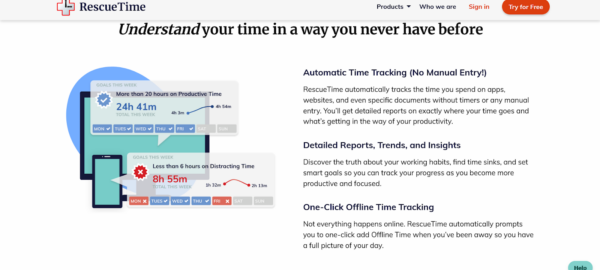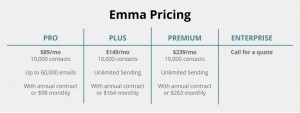If you love posting, scrolling, creating stories, and double-tapping, you might be interested in pursuing a career as an Instagram manager. Working behind the scenes in social media is quite different than running your own personal account, though. Keep reading to find out which skills are most important for Instagram marketers and how you can kick-start your new career.
What Does Being A Social Media Manager Entail?
Working as a social media manager is about way more than simply posting images. The job involves a combination of several skills. You’ll need to be a pro at interacting with your clients and engaging their audience. Here are a few of the basic job functions you can look forward to on a daily basis.
Customer Service
In today’s world, few people are willing to wait on hold for hours to speak to a customer service agent. They’ll reach out to the company on social media instead.
As a social media manager, you’re on the front lines of customer relations. You’re often the first one to hear about the success of your client’s product and the first one to take the heat for negative reviews, too.
Responding to praise from customers is pretty simple. A clever quip or a personalized thank you is often all you need, like Made in Nature does on their posts.

Of course, responding to not-so-happy customers is part of the job, too. You’ll be tasked with listening to customer’s negative feedback, empathizing with their concerns, and responding appropriately. If you can get to the heart of each customer’s comments and give them a reply that makes them feel validated, you just might win them over for life.
Growth Management
One of your main goals will be to grow Instagram engagement and contribute to an increase in your client’s revenue. Of course, every business wants as many followers as possible, but that kind of growth doesn’t happen without a solid strategy.
In order to grow your client’s Instagram followers, you’ll need to make sure you’re posting the right kind of content for your audience. You may need to help your client build a few buyer personas so that you know exactly who you’re targeting with your posts.
You’ll also need to use the right hashtags. You can use up to 30 hashtags per post, but using that many will make your post look spammy. The key is to pick a few hashtags that are specific enough to speak to your target audience, but not so general that your post will get buried under all the others. Using branded hashtags can help grow your following, too.

When your Instagram following isn’t growing like you think it should, you’ll want to do an Instagram audit to figure out why. Taking a closer look at your followers, your content, and your branding can reveal where you’re making mistakes or missing opportunities.
Social Monitoring
Instagram managers need to be able to understand data and use it to create smart strategies. You’ll want to monitor data that relates to your own Instagram posts, followers, and brand identity. You’ll also want to dig up data that provides insights about potential customers and competitors
Of course, you can see a fair bit of data right from your Instagram profile. To go deeper into analytics, you can use an additional platform like Hootsuite, SocialFox, or squarelovin.
You’ll also want to manually browse through hashtags that are key to your brand, products, and customers. The types of posts and comments you find can help you determine future content.
Recording your metrics and connecting the dots in your data can show what parts of your Instagram strategy need adjustment. Even better, they can prove the ROI of your Instagram content.
Content Creator
Creating engaging content is an essential part of being an Instagram manager. This includes images, video, and copy.
The best social media managers know their target audience and create content that speaks directly to them. For example, Instagram is most popular with Millennials so you don’t want to write a caption that sounds like you’re talking to your grandma.
Your job is to speak the language of your target audience. Find out their needs, their worries, and their pain points. Then, show them and tell them how your client can solve their problems. By doing this, you’ll create perceived value for the product and brand. KeepCup knows exactly how to speak to their environmentally-conscious audience.
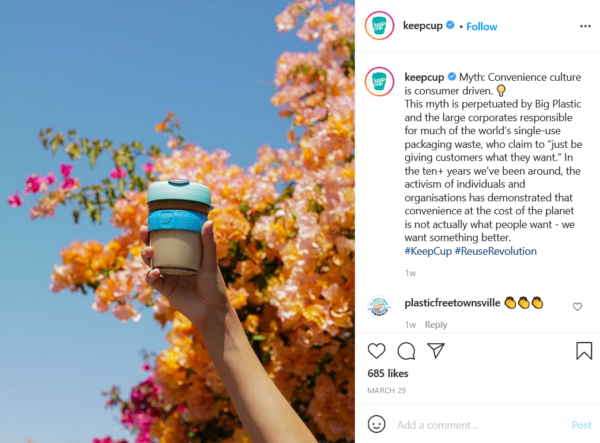
Creating a content calendar is one of the best ways to organize all of the copy, images, and video you’re planning to post. At the very basic level, you can create a spreadsheet to keep track of your content. On the more advanced end, you could subscribe to a robust content management system like Loomly.
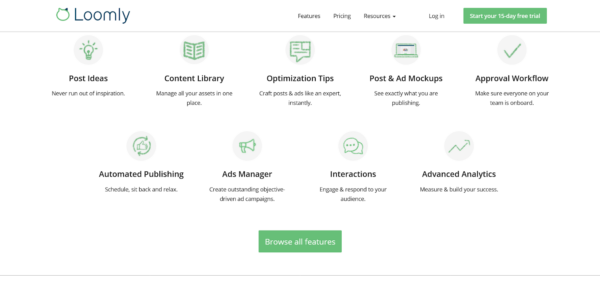
Community Manager
Every social media manager is the voice of the company they’re representing. They use that voice to personally relate to customers and build a community of followers.
Managing a social community is a lot like nurturing a physical community of people living together in a neighborhood. People want to feel like they belong to a group of like-minded people. They want to be active in the community, connecting and sharing their interests.
Lloyd Taco Factory has built an Instagram community of taco-loving fanatics.

Listening to feedback, providing support, and showing appreciation are all critical aspects of community management. Being a great community manager can be as simple as replying to comments instead of ignoring them.
Part of managing your brand’s community is protecting your brand’s reputation. You don’t want spam or fake followers clogging up your posts. You’ll want to be active in discussions that are directly related to your brand. Of course, you never want to be offensive to members of your community or let a piece of negative feedback turn into an all-out war.
How To Get Started As A Social Media Manager
Take A Course
If you’re new to social media management, taking an online course can be a great way to get started. There are several paid and free options. Before you pick one, though, be sure to review the topics covered by the course. That way, you can be sure you’re getting the instruction and advice you need. Here are a few course options.
- Skillshare offers hundreds of Instagram classes at beginner, intermediate, and advanced levels.
- Hootsuite Academy offers a six-hour Social Marketing Certification Course.
- Boot Camp Digital hosts an Instagram marketing course that covers beginner to advanced topics.
- Udemy offers more than 400 Instagram course options that range from one-hour quick hits to 23-hour comprehensive guides.
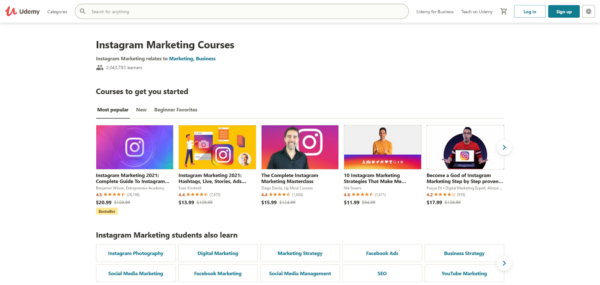
Beyond formally structured courses, any Instagram manager will tell you that a critical part of their job is keeping up with Instagram trends. The social media landscape is constantly changing and you’ll need to do your own research to stay on top of the latest developments.
Create A Strategy & Set Your Rate
Before you start reaching out to potential clients, you’ll want to answer one simple question: What will you offer as an Instagram manager?
You can offer the entire range of your skill set to your clients or you can specialize in a few areas of social media management. You can even put together personalized packages for each client. Here are just a few of the services you can offer.
- Researching the target audience and setting up a comprehensive Instagram strategy.
- Setting up and optimizing an Instagram account.
- Creating content. This could include photography, video, graphics, and copywriting.
- Setting up a content calendar and scheduling posts.
- Running Instagram ads.
- Responding to DMs, comments, and tagged posts.
- Monitoring, analyzing, and reporting on metrics.
Setting your rate can be tricky. Like any professional, when you’re first starting out your rate will be low. Entry-level social media managers charge an average of $ 20 per hour. After you have around five years of experience, you might raise your rate to $ 30. Expert social media managers can charge upwards of $ 50 an hour.
As you set your rate, think about your expenses and keep in mind that an hourly rate does not include things like health insurance, vacation days, or a 401k. Be sure to price your services so that you end up making a profit after you account for all of these costs.
Put Yourself Out There
Attracting your first clients can be one of the scariest parts of becoming an Instagram marketer. In fact, many potential social media managers have no idea how to market themselves, and this is where a lot of people give up. It doesn’t have to be that way! With a few smart steps, you can secure a consistent flow of clients.
Create Your Own Website
Create an online portfolio that showcases your previous work. Now is not the time to be shy—use your portfolio to brag about your best work. Put together screenshots of your best graphics or images. Show a post that went viral and list metrics to back it up. Write a case study that summarizes your work with a previous client.
Use a website builder like Squarespace or Wix or look for specific online portfolio sites like Journo Portfolio or Behance.
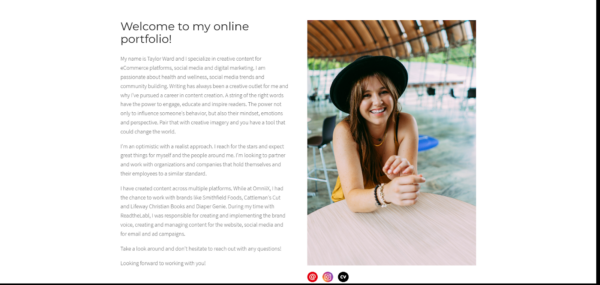
Build Up Your Instagram Profile
If you want to be an Instagram manager, your personal Instagram account has to shine. Every potential client is going to be looking at your profile, so make a memorable impression.
- Make your profile picture professional, but not too stuffy. It’s okay to show a bit of personality.
- Link to your online portfolio or website.
- Include keywords in your bio.
- Be sure to add your contact information.
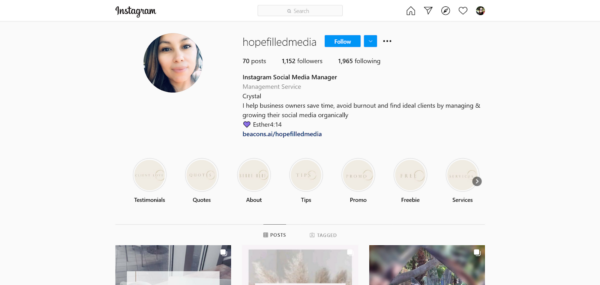
Keep Building Your Portfolio
As you start working with clients, document the work you do and the resulting metrics. Take screenshots and preserve your work as you go. Refresh your portfolio at least once every three months.

Keep Growing Your Client Base
Never stop networking. Talk to your friends, family, and former co-workers about your work as an Instagram manager. Chances are that you’ll get a least a few client referrals just from the people you know.
Many social media managers list a profile on freelancer sites to find work. Joining local business groups, attending conferences, or doing volunteer work can be great ways to find clients, too.
Manage Your Time Well
As you start to build a client base, it’s critical to manage your time well. People who can schedule their work time and focus on one client at a time are more profitable and less likely to experience burnout.
How should you manage your time? Here are a few basic tips.
- Set a work schedule for yourself and stick to it. If you want to work 50 hours each week, that’s fine, but don’t let yourself creep up to 60 hours per week. An important part of time management is maintaining a healthy work-life balance.
- Keep track of your time, even if you’re billing by the project. This will help you see where your time goes and pinpoint opportunities to become more efficient. A tool like RescueTime can be really helpful.
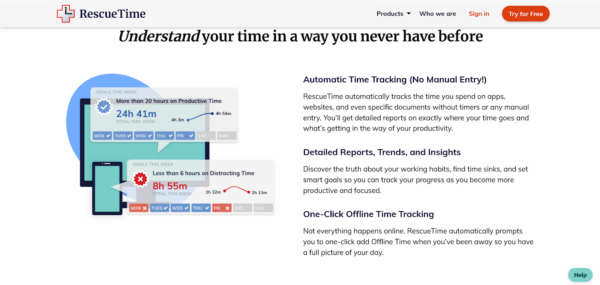
- Ask each client to set up a scheduled weekly meeting with you. If you’re well prepared each week, this meeting can take care of several questions and potential issues in a short amount of time.
- Set up a social media scheduling software. Check out DrumUp, Hootsuite, or Buffer. It will take time to learn a new software, but once you get the hang of it, these tools can save you tons of time.
It’s Time To Get Started!
Now that you know what it takes to be an Instagram manager, it’s time to get started. Develop your skills, build your portfolio, and start networking. Use the tips from this article and you’ll be on your way to a profitable career in Instagram marketing.
Digital & Social Articles on Business 2 Community
(59)
Report Post